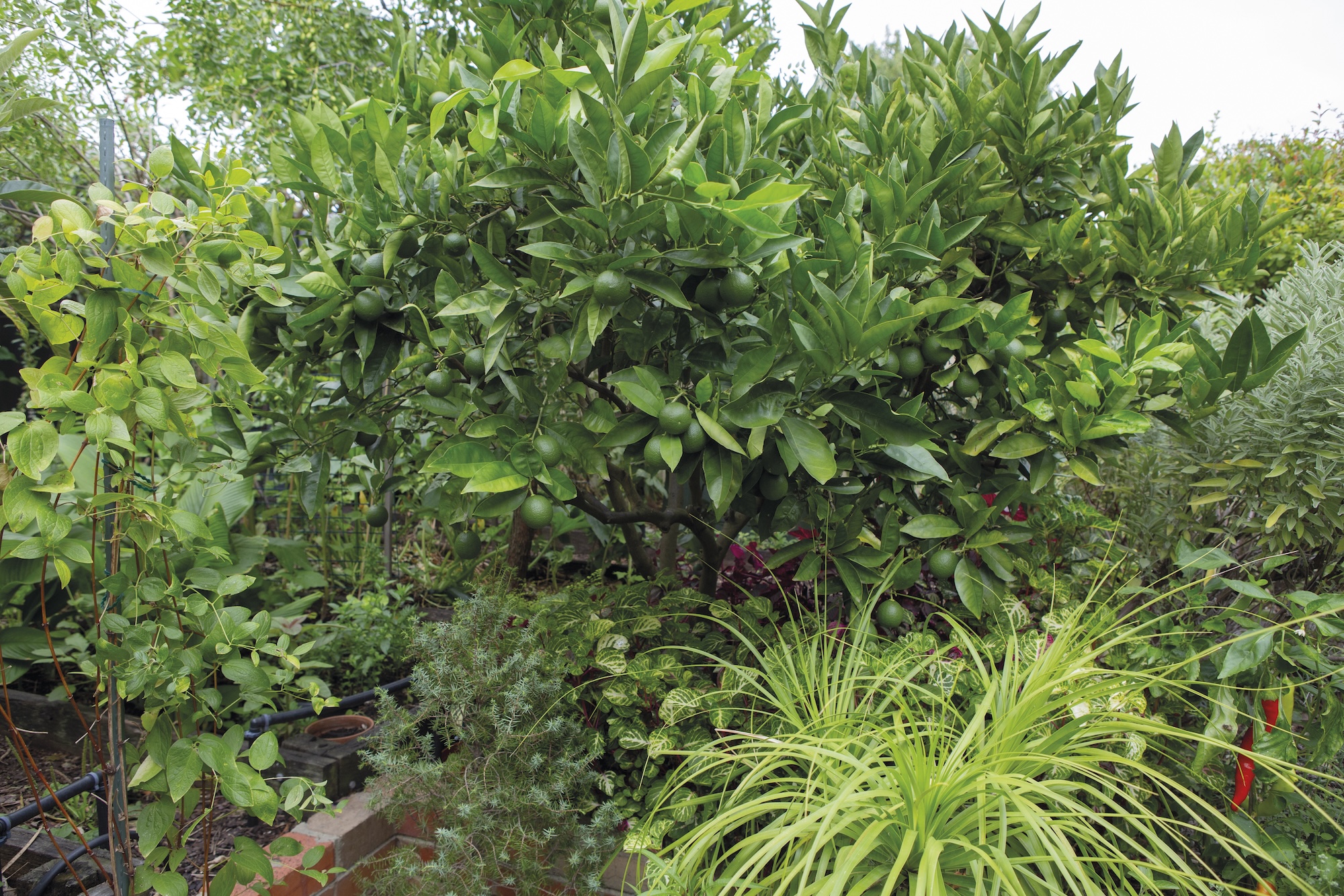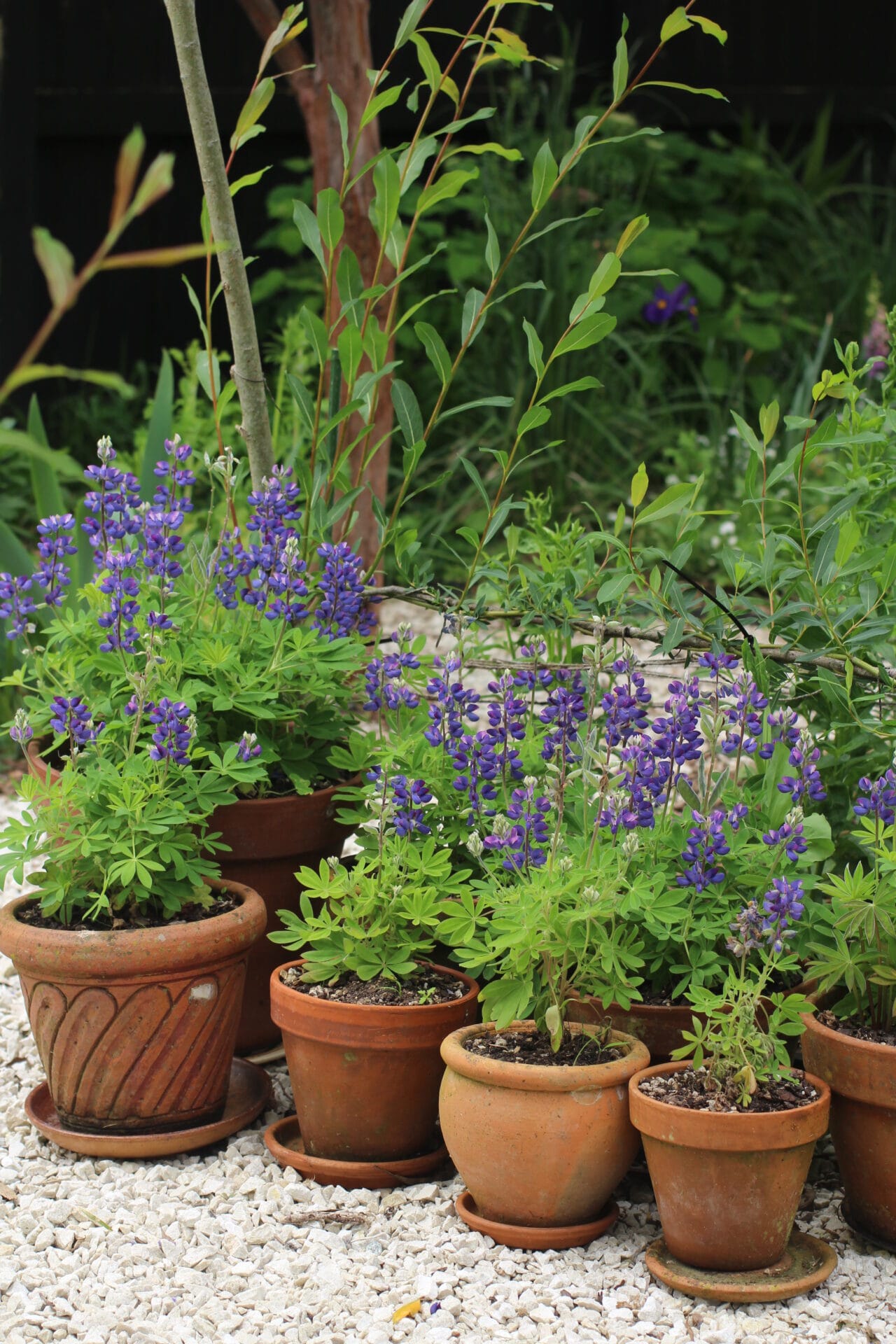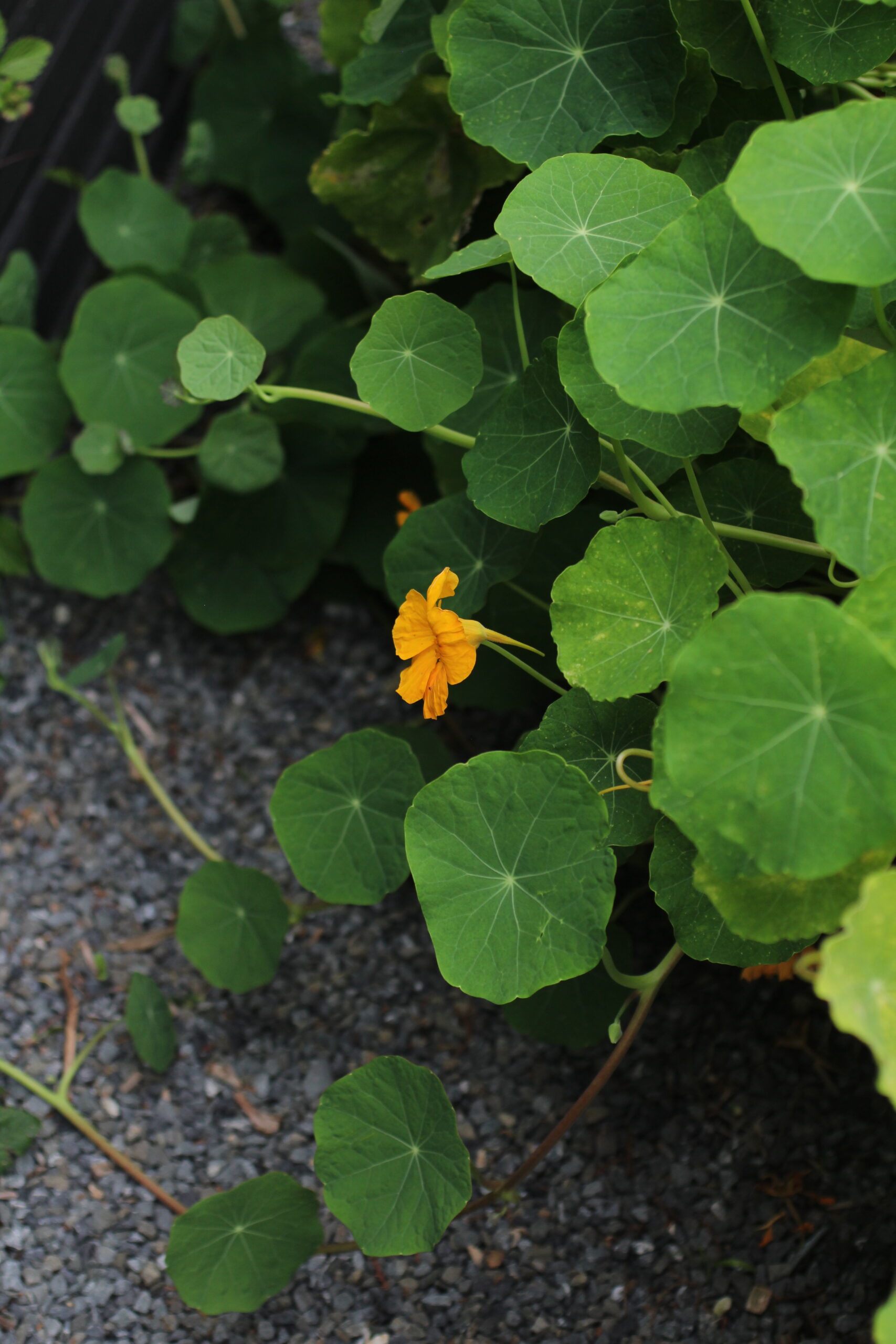A hedging guide and list of the best shrubs and best hedge plants for both privacy and beauty.
The 2025 Winter Gardening Series is supported by Gubba Garden Store.
Winter is one of the best times to plant hedging and screening plants. Cooler temperatures and softer soil make it easier to dig and establish new plants, while the lack of heat stress gives roots time to settle in and grow strong before spring.
Whether you’re planting evergreens for year-round privacy or deciduous shrubs for seasonal interest, getting them in the ground during winter sets them up for success in the growing season ahead.
Choosing the right privacy hedge
When it comes to creating a private, beautiful landscape, the right hedging and screening plants are essential. Whether you’re looking to block out a nosy neighbour or create a stunning backdrop for your garden, selecting the best privacy hedges, shrubs and trees is crucial.
The right plants can offer year-round beauty, reduce noise and provide shelter for local wildlife – as well as the privacy and structure you’re after.
One of the first steps in creating a privacy screen is selecting the right plants for your needs. Privacy hedges come in various forms, from deciduous shrubs to evergreen trees, and each has its own advantages.
Selecting the right privacy hedge depends on your climate, soil type, and the level of maintenance you’re willing to commit to.
Evergreen foliage is an excellent choice for year-round privacy, as it maintains its dense foliage and lush appearance throughout the seasons.
Best time for hedge planting
In most regions, the ideal time to plant evergreen trees and shrubs is from winter to early spring.
This timing allows the plants to establish strong roots before the growing season begins, ensuring they can thrive throughout the year.
During this period, the ground is also soft enough for digging but still cool enough to encourage root development before the summer heat sets in. This is especially important for evergreens, which benefit from having time to establish their roots.
Soil considerations
For optimal growth, well-drained soil is a must for most hedging plants. Adding organic matter such as compost, chopped seaweed, chicken and sheep manure at the time of planting can improve soil fertility and help your hedge establish faster.
Incorporating hedging into landscape design
When planning your hedge, consider the mature height and plant sizes to ensure your hedge fits your overall landscape design.
Regular pruning will help maintain the desired shape and dense growth of your hedge, whether you’re aiming for a formal evergreen look or a more natural, informal hedge.
Fast-growing hedges for quick privacy
For those who need privacy fast, Olives are one of the best fast-growing hedge plants available. This evergreen hedge can reach a mature height in just a few years, providing an effective sound barrier and privacy screen.
Other fast-growing shrubs to consider are the Griselinia ‘Broadway mint’, known for its glossy green leaves and fast growth rate. Another large, fast-growing option is Alnus jorullensis.
Native plants for low-maintenance hedges
Incorporating native plants into your privacy hedge is a great way to support local wildlife while ensuring that your hedge is well-suited to your local climate.
In New Zealand, Pittosporum, Griselinia, Olearia and Corokia are great native hedging options. Or for something a little different, try hedging Muehlenbeckia astonii.
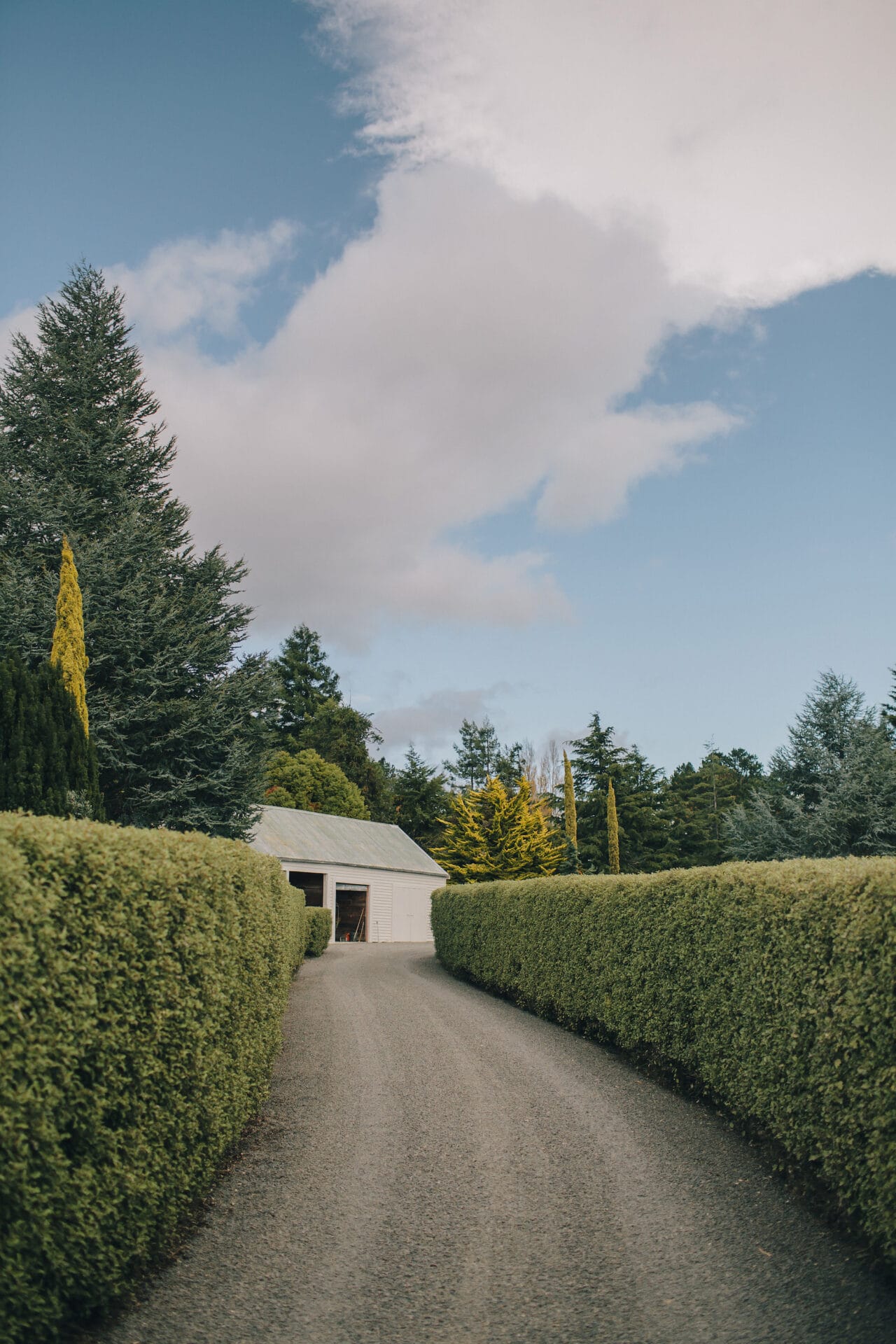
Olearia hedge lining the driveway at Sage Journal founder Emma Sage‘s family home.
Top 10 effective hedging & screening plants
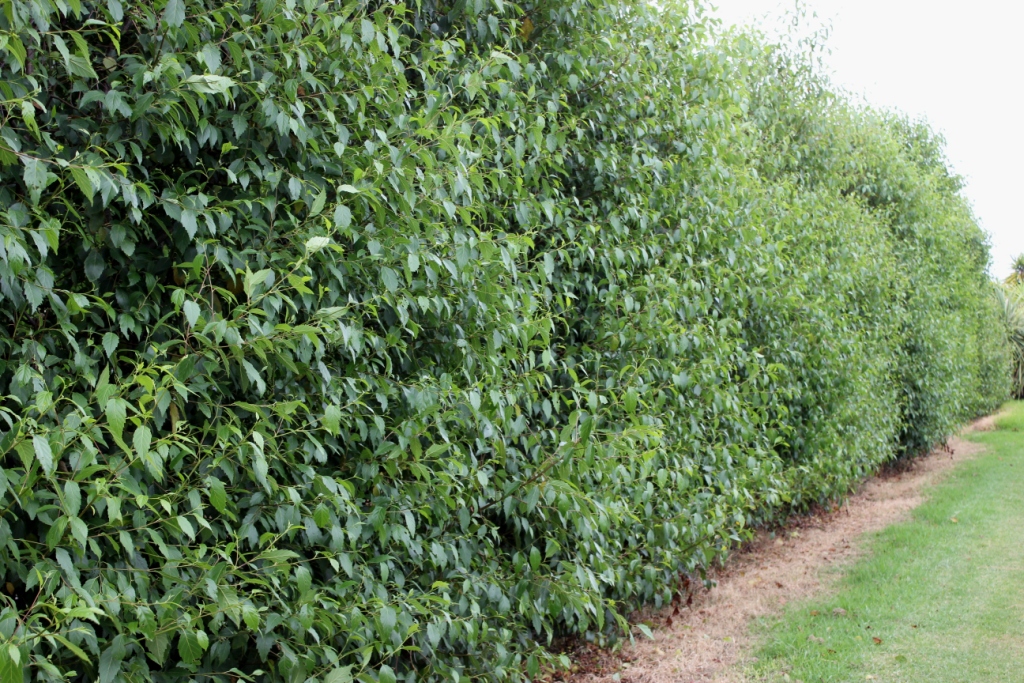
1. Alnus jorullensis (Evergreen alder)
Fast-growing and evergreen, though it may drop some leaves in winter and appear a little sparse during the coldest months.
Alnus jorullensis is excellent for wet or boggy sites — it tolerates water-logged soils better than most hedge plants.
Best for a taller hedge option. Grows quickly to a large size, so it’s best suited to big gardens or rural properties needing fast vertical screening. (Definitely not a good choice for small spaces!)
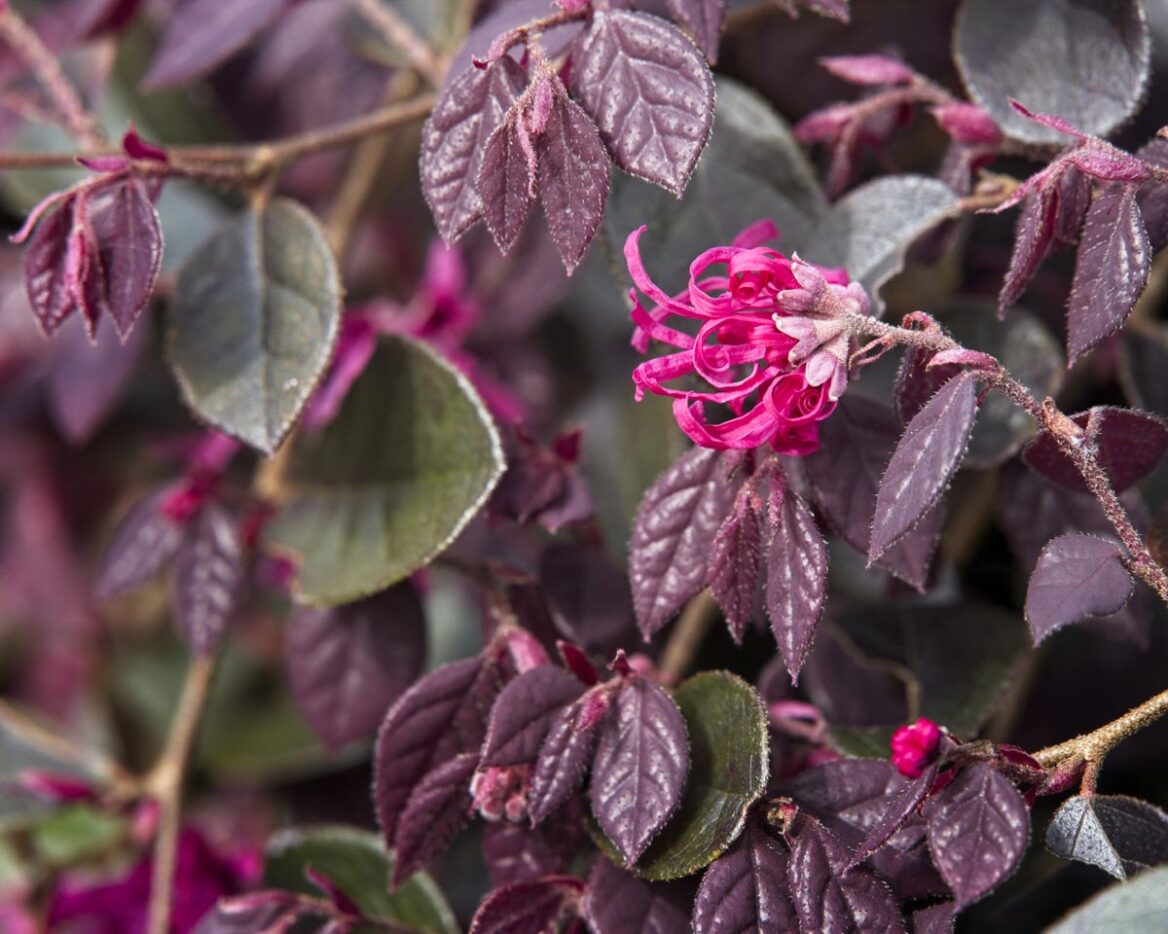
2. Loropetalum Rubrum ‘Firedance’
Part of the witch-hazel family, Loropetalum offers a striking mix of foliage and flowers. It is a great attracter of bees and pollinators when in flower.
Variety to try:
Loropetalum Rubrum ‘Firedance’ — deep burgundy / purple-pink foliage and fringed pink flowers. These often blooms in winter, brightening up the garden during the cooler months.
Location: Sheltered spots with well-drained soil. Slightly tender in exposed or frosty areas.
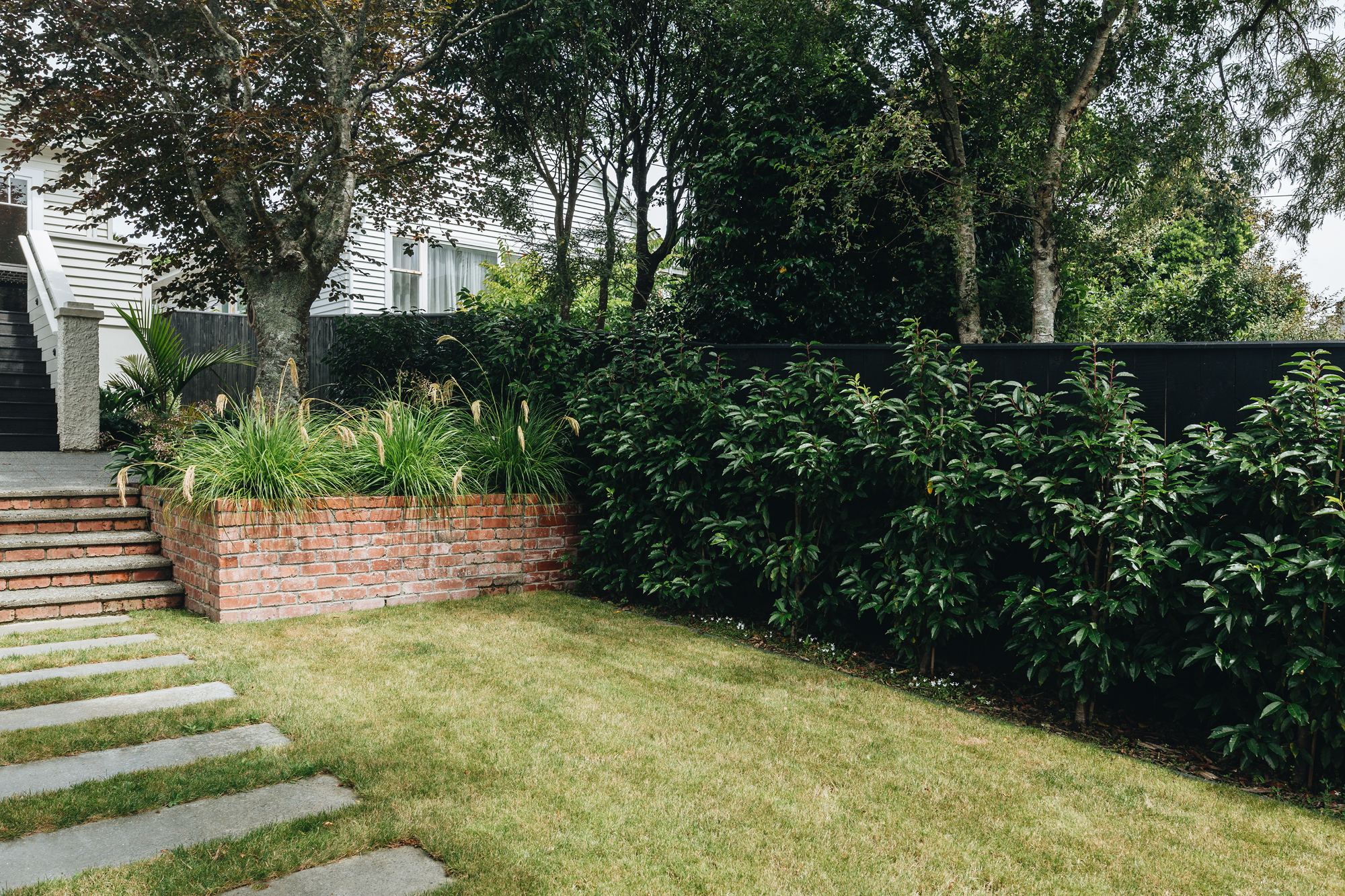
3. Laurels — Laurus nobilis (bay) & Prunus lusitanica (Portuguese laurel)
Laurus nobilis (Bay laurel) is not only culinary-friendly, but also makes a versatile formal hedge or topiary. It features aromatic dark green leaves.
Prunus lusitanica (Portuguese laurel) is fast growing and highly adaptable. Its glossy green foliage, red stems and dense habit make it ideal for privacy screening. This versatile shrub thrives in a variety of soil types, including sandy and well-drained soils, and is well-suited to formal hedges.

Prunus lusitanica (Portuguese laurel)
—
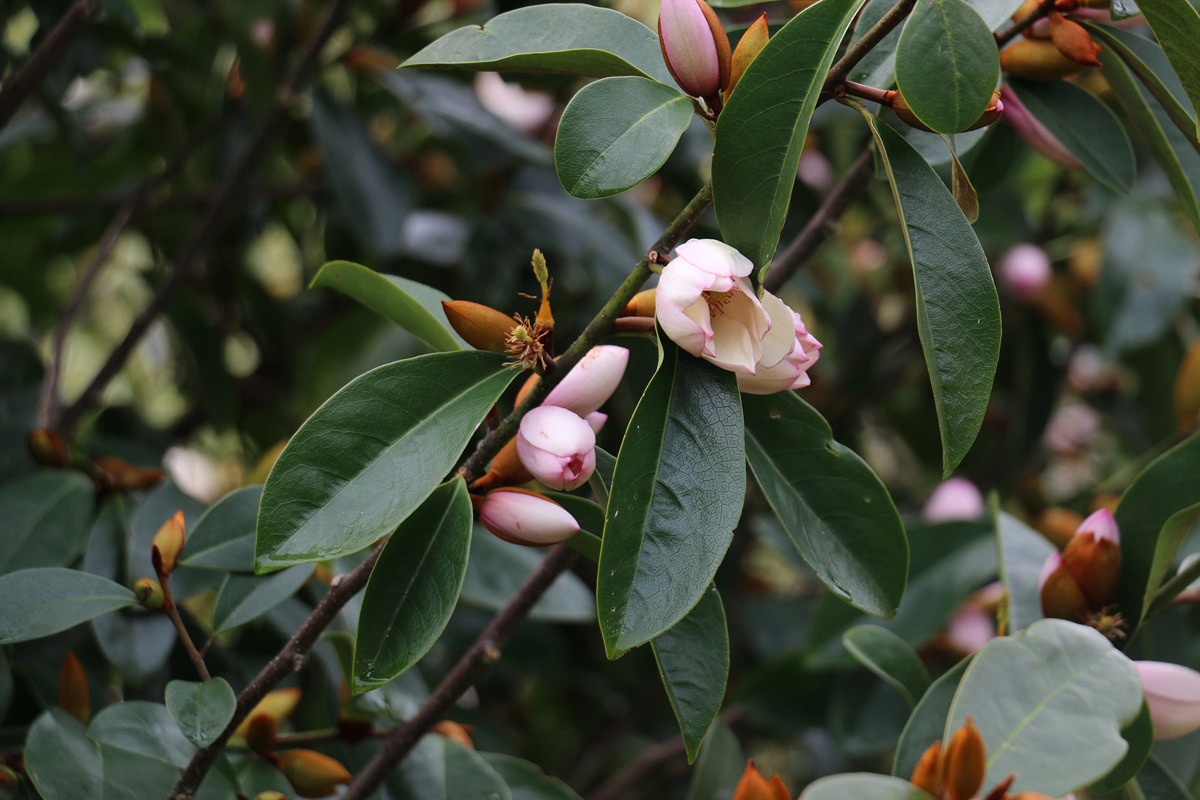
4. Michelia
Michelias make a beautiful hedge. A Michelia (now commonly listed under the Magnolia genus) is an evergreen flowering shrub or small tree loved for its sweet blooms, glossy foliage and ability to be shaped into an elegant hedge.
Many varieties flower from late winter into spring, helping to brighten the garden during quieter months. Their velvety buds and softly fragrant flowers make them a standout in both formal and informal settings.
Try varieties:
- ‘Bubbles’ – compact, ideal for hedging especially if a flowering hedge appeals. Velvety buds open into fragrant, creamy flowers.
- ‘Fairy Blush’ – this variety has masses of showy blush-pink flowers and a sweet scent.
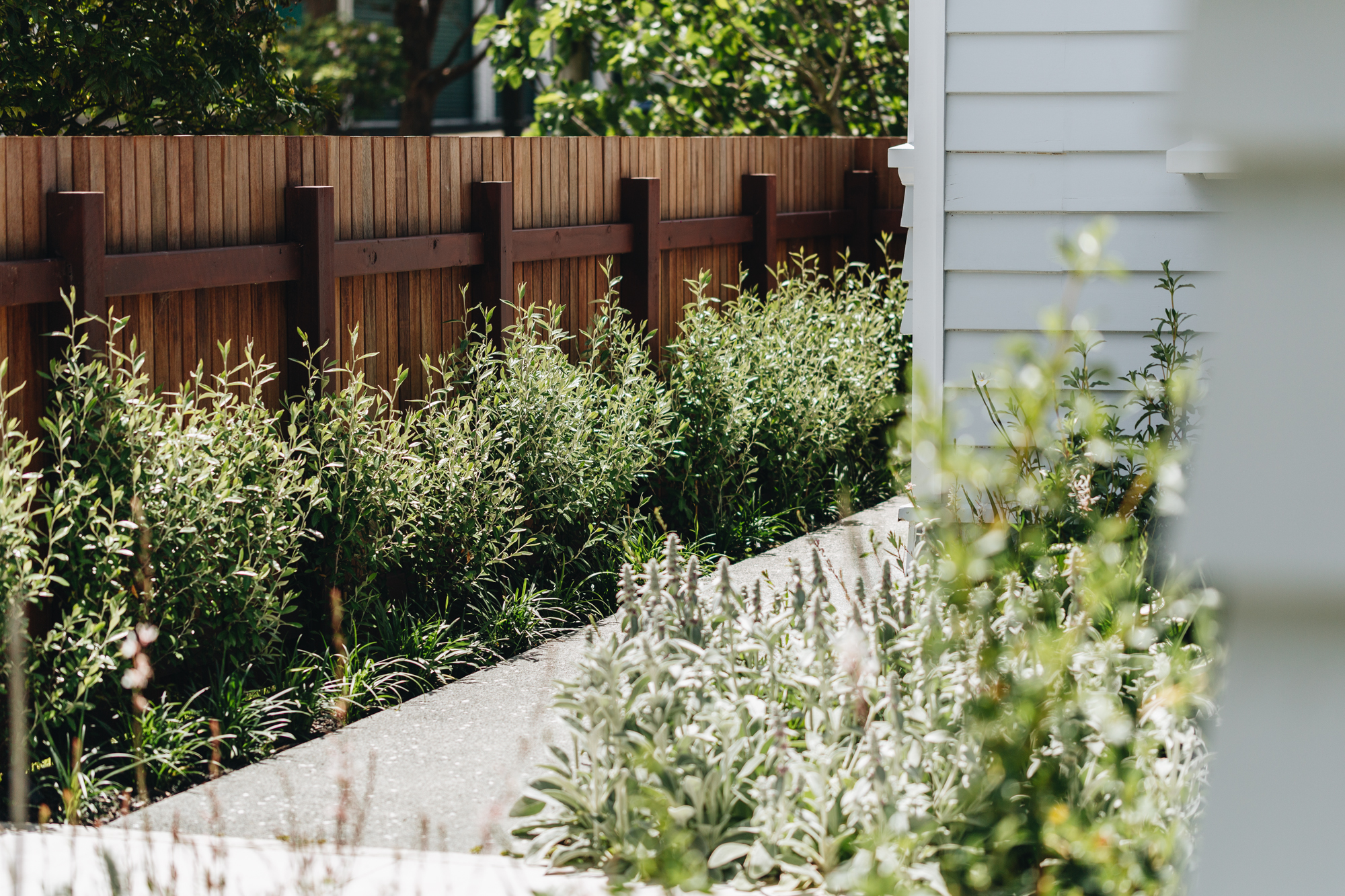
5. Corokia
A hardy New Zealand native. Corokia hedges are low maintenance, wind-hardy and suitable for dry or coastal gardens. Can be easily trimmed and shaped.
Try varieties:
- ‘Frosted Chocolate’ – smoky-bronze foliage
- ‘Geenty’s Green’ – fine green leaves (similar to olive leaves) for a classic tidy look.
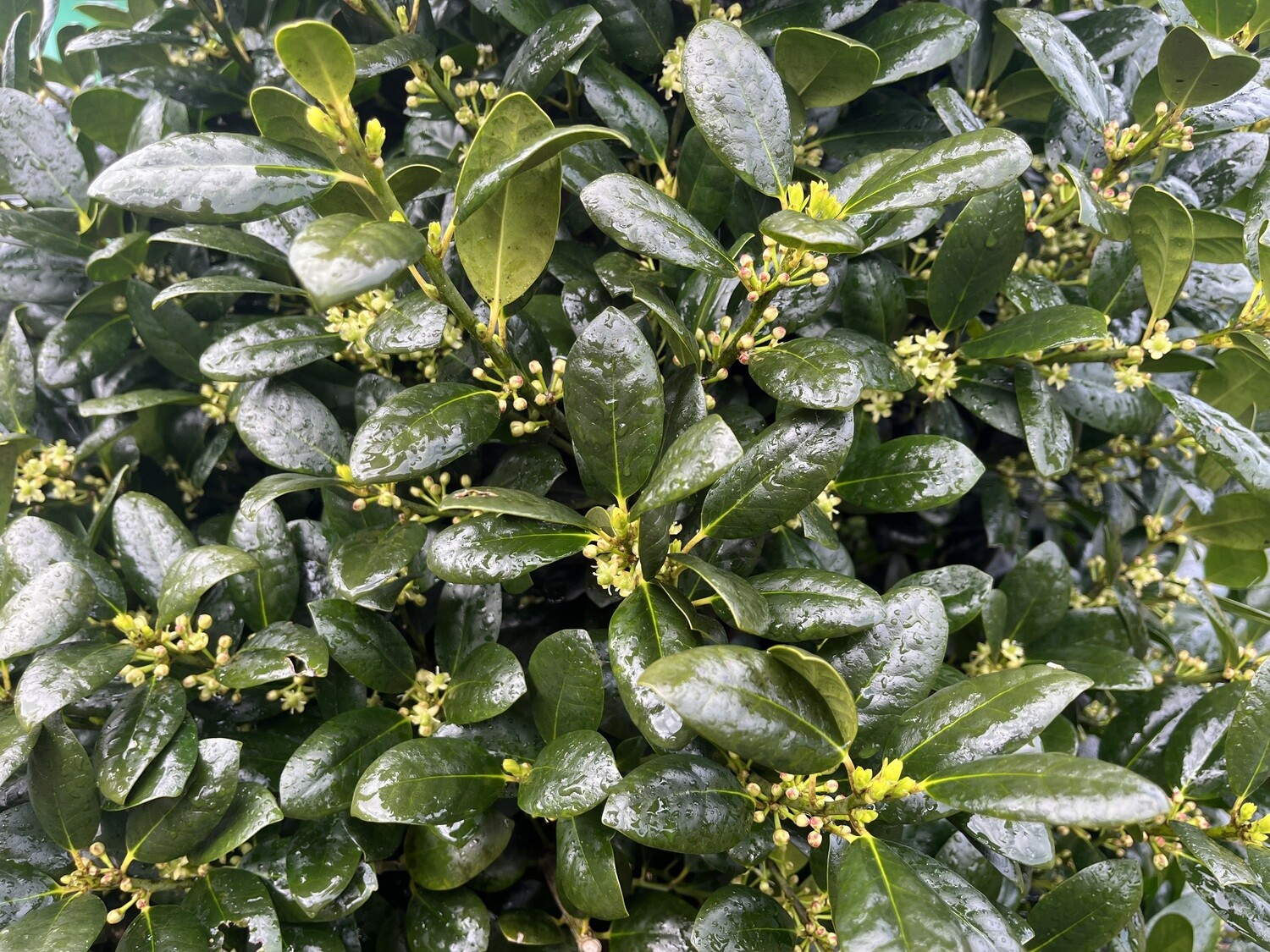
6. Ilex ‘Largo’
This hedging plant has large, lush dark-green leaves which are held densely, creating a great hedge.
Ilex ‘Largo’ is an ornamental holly hybrid with broad foliage. But despite its holly heritage, the Largo variety is non-prickly and makes a lovely dense hedge. Produces bright red berries.
Grows well in: Full sun to part shade with well-drained soil. Does not like wet feet so be careful of poor drainage (root rot).
A great alternative to traditional box hedge (buxus) for a slightly taller formal border.
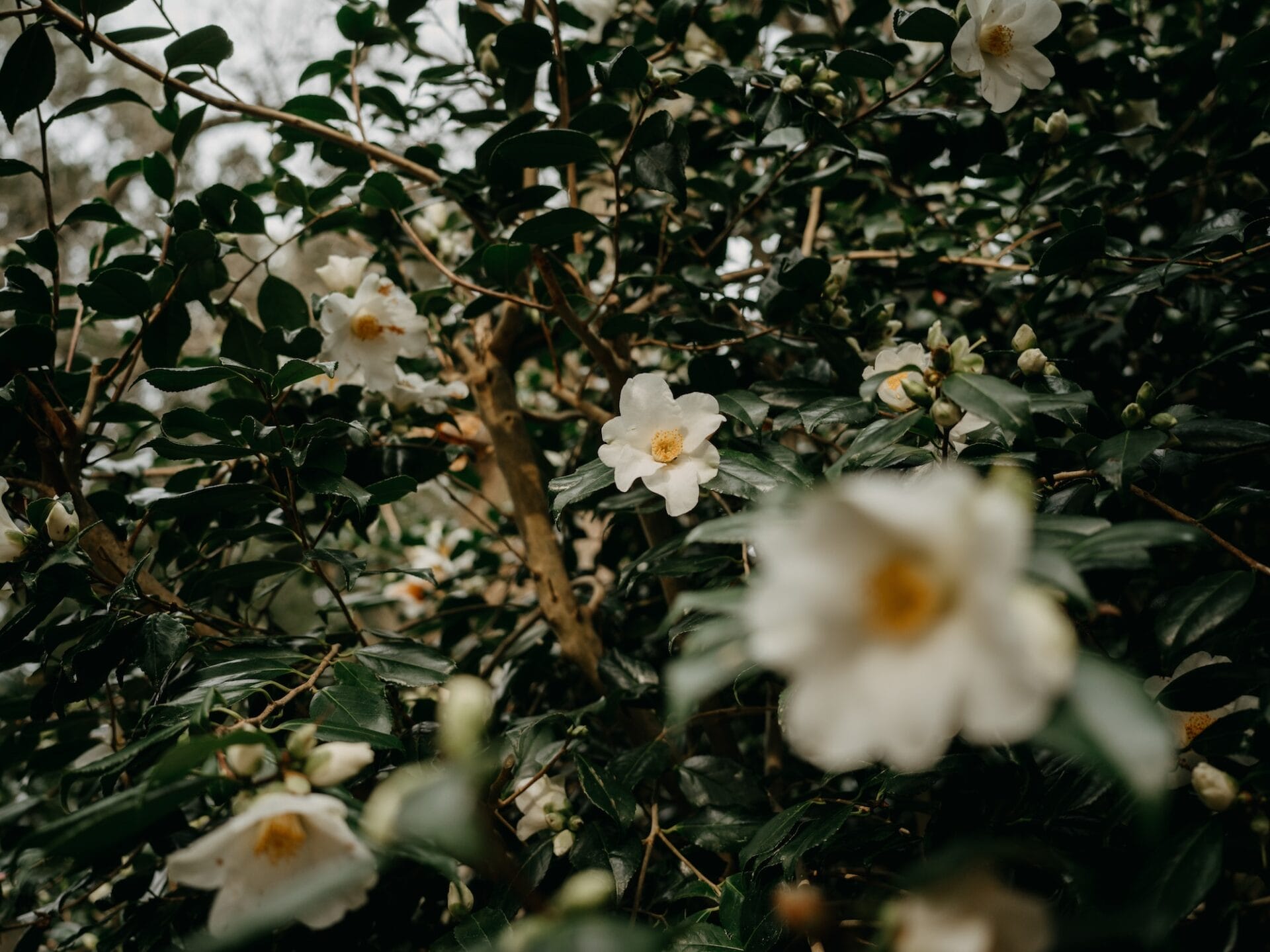
7. Camellia
Camellias are a popular evergreen shrub that add lovely winter colour and structure. Some varieties make a great hedge.
Sasanqua types are better for hedging than Japonica — they have smaller leaves and more sun tolerance. Though they will thrive in partial shade, preferring protection from hot afternoon sun.
Great camellia hedging options:
- ‘Setsugekka’ – pure white single blooms.
- ‘Cinnamon Cindy’ – fragrant, double white blooms.
- ‘Spring Festival’ – showy, pink double blooms.
Care tip: Mulch in summer and prune after flowering for best shape and density.
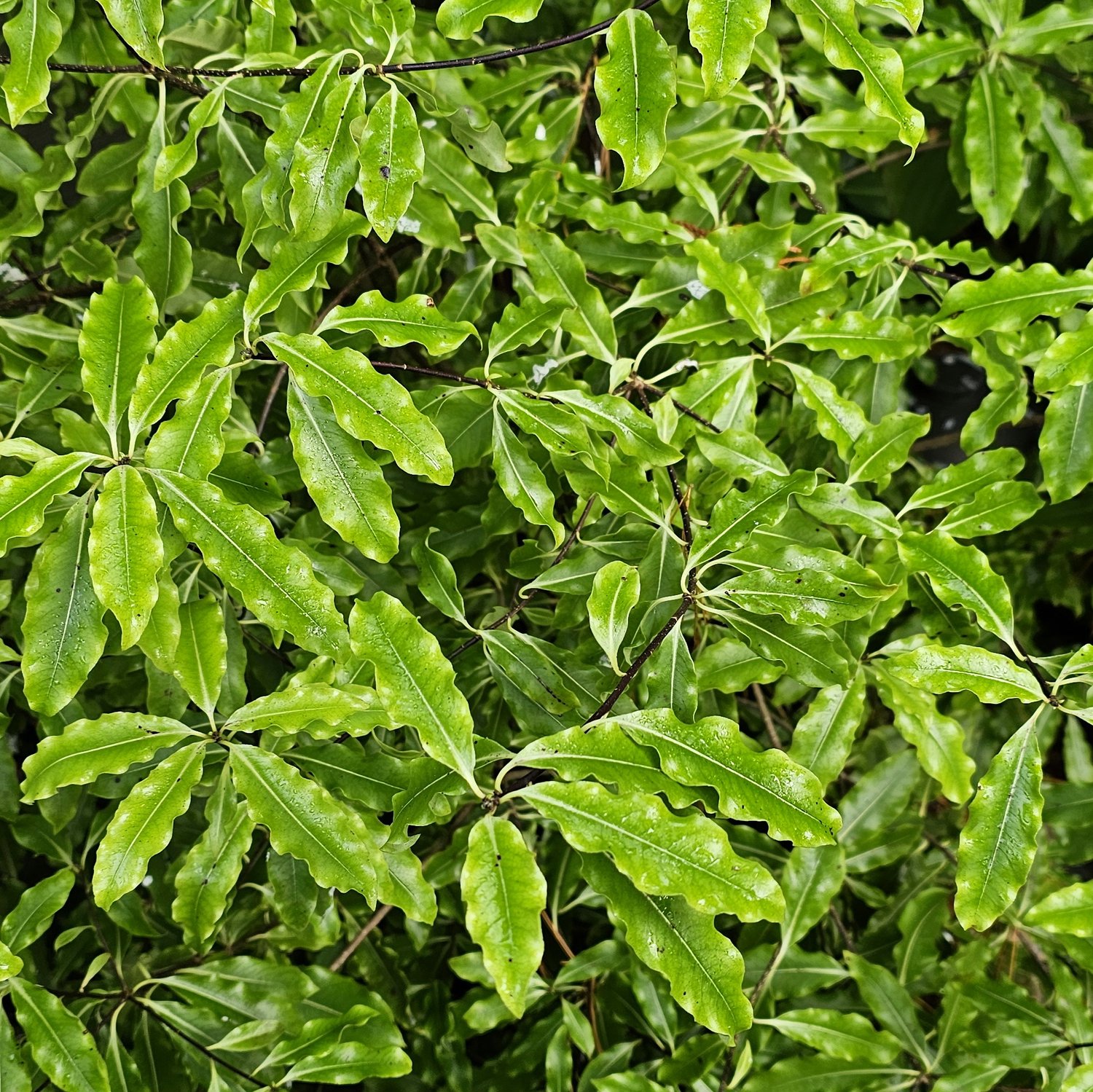
8. Pittosporum
This New Zealand native is well-suited to many conditions and is a go-to hedging shrub. Fast-growing, tough and easy to shape.
Try these varieties:
- ‘Mountain Jade’ (Pittosporum tenuifolium) – an upright, bushy and tight form.
- ‘Lemonwood’ (Pittosporum eugenioides) – larger, more free-form growth and soft yellow-green foliage.
Pittosporums thrives in: Full sun, well-drained soils. They generally aren’t affected by frost, but it’s a good idea to protect them from heavy frost when young.
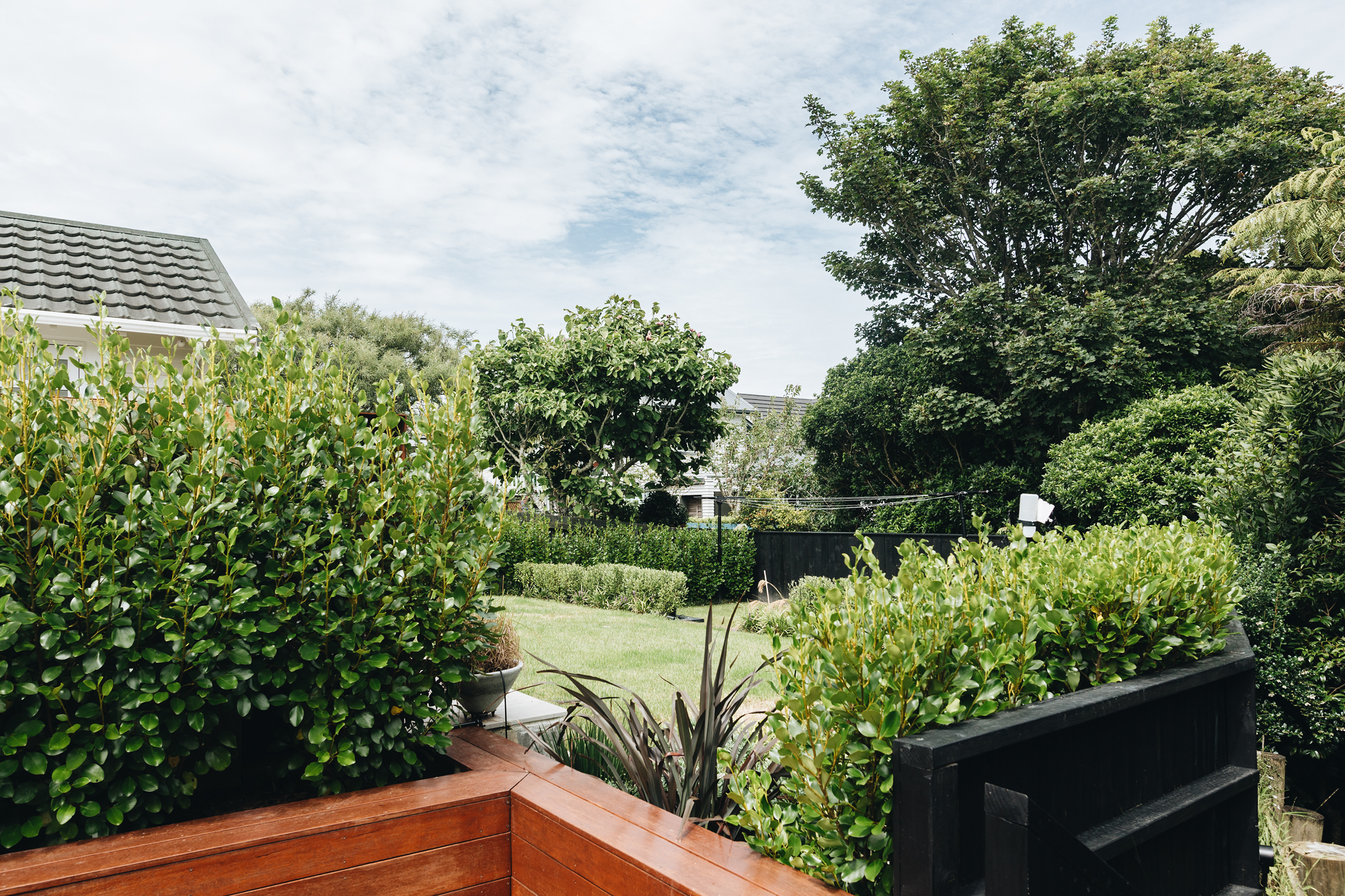
9. Griselinia ‘Broadway mint’
An evergreen favourite for its dense, glossy foliage and neat growth habit. Most commonly seen as a hedge.
A hardy hedge choice. Ideal for coastal gardens, as it copes well with wind and salt spray.
Caution: Griselinia can be frost tender, especially when young – protect with frost cloth or plant in warmer microclimates.
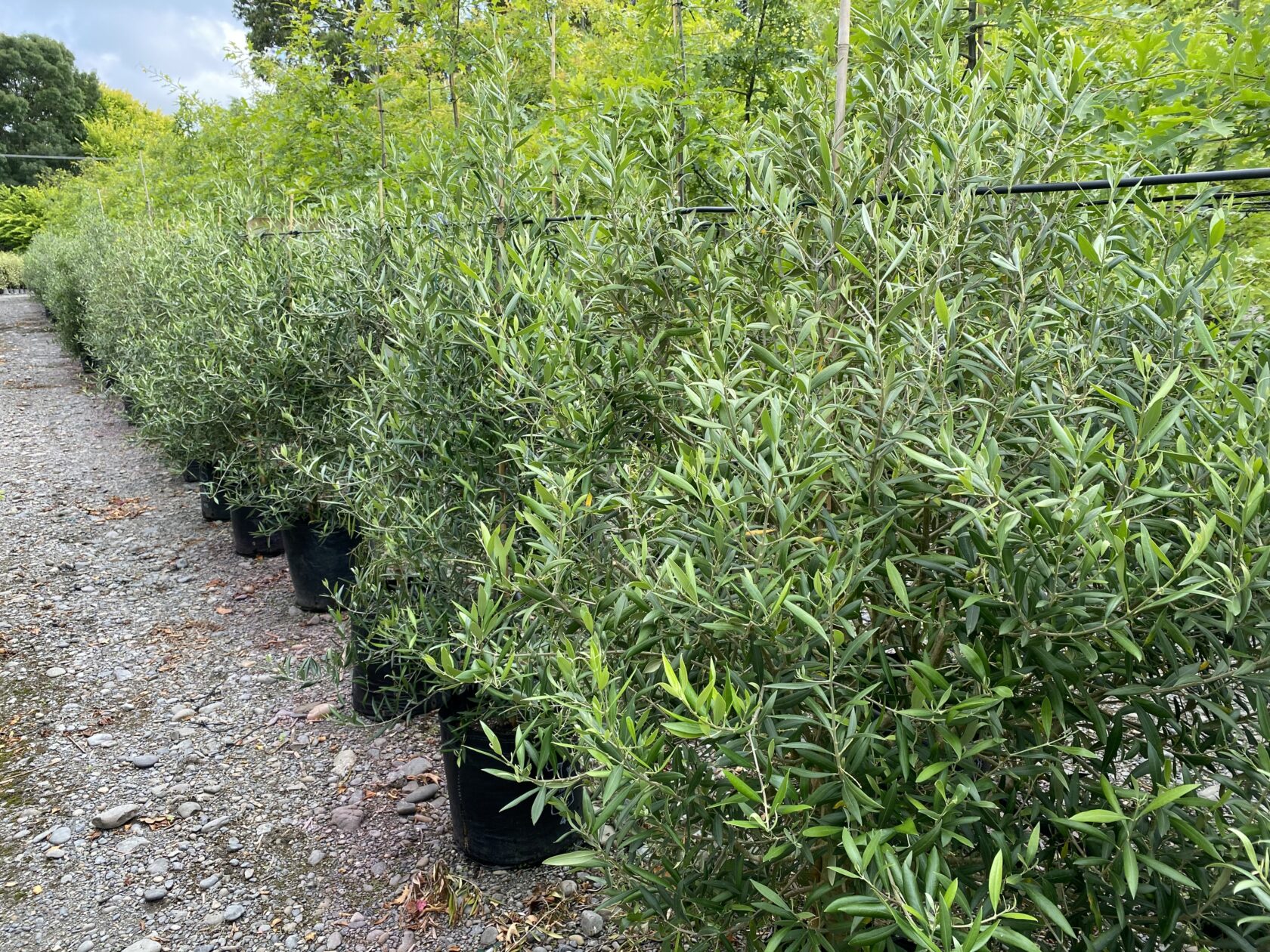
10. Olea ‘El Greco’ (Olive)
The humble olive.
‘El Greco’ is a slim, compact-growing olive variety, perfect for trimming into a hardy hedge. Reaches up to 2.5m tall, with silver-green foliage that reflects light beautifully. This variety also produces lots of good quality fruit.
Olives thrive in: Full sun, hot and dry conditions, but also tolerant of mild frosts and cooler weather. Well-drained soil is best.
Hedge style: Elegant, Mediterranean look.
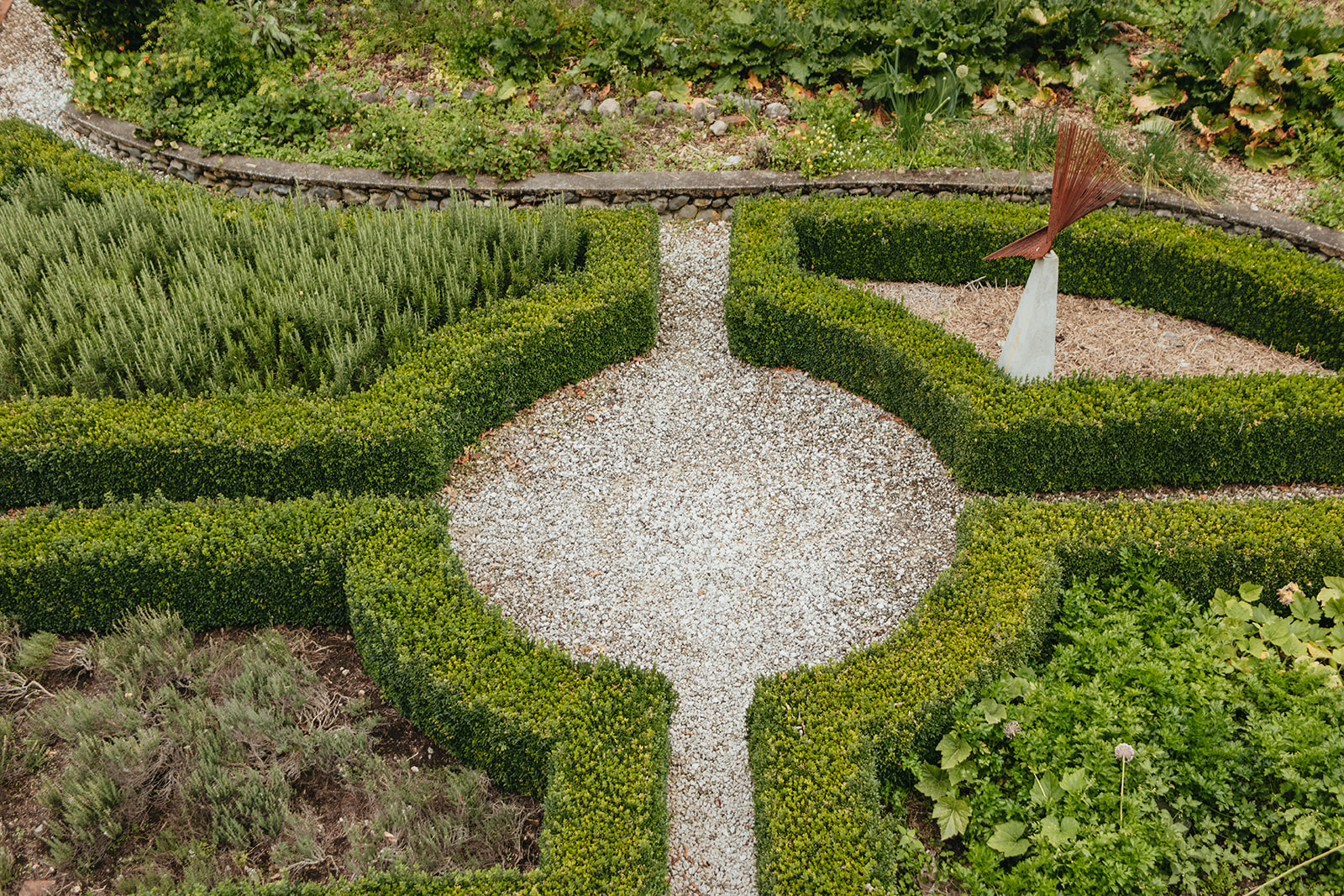
Plants for smaller, lower growing hedging
Buxus sempervirens (Box hedge)
The common ‘box hedge’ is still a crowd favourite, after so long! One of the best low growing hedges for a classic, formal look. Perfect for edging or structured borders.
It is slow growing, which also means that once it has been hedged, it required little maintenance as there is minimal clipping required.
It’s easily propagated — take cuttings or transplant plants easily.
Buxus Microphylla ‘Koreana’
This type of Buxus has attractive lush vibrant green foliage and is prefect for a low growing but informal look. It’s a softer, looser form of box hedge. It is a bit wispier than the standard box hedge if you are looking for something different.
Great for cottage gardens or low feature hedging.
Pittosporum ‘Frankie’s Folly’ or ‘Little Kiwi’
Both are compact New Zealand native shrubs, easily shaped into spheres or kept as tidy hedges.
Kohuhu (Pittosporum ‘Frankies Folly’) is a good alternative to box (buxus) with a more NZ-native character.
Pittosporum ‘Little Kiwi‘ has tiny green foliage and forms a dense mound. Great for a low growing hedge that you can also shape into balls.
Westringia
Drought-tolerant and long-flowering, this Australian native is a great low hedge choice.
Westringias flower for much of the year. They are a hardy shrub that can handle dry periods and coastal environments.
The ‘Grey Box’ variety is a compact form and has tidy growth up to 45cm, with pale lavender-blue flowers.
Perfect for: Coastal, windy or dry gardens where resilience is key.
—



